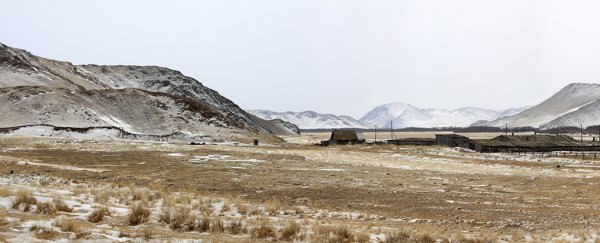The world is changing as temperatures rise, and just as some parts of the planet are predicted to become uninhabitable, others are heading in the opposite direction – including the freezing cold wastelands of Siberia, new research shows.
Siberia and the wider Asian Russia region accounts for 77 percent of Russia's land area but just 27 percent of its population. It's not a particularly appealing place to set up home right now, but that could change in the coming decades.
Based on the researchers' calculations, this cold and desolate part of Earth is going to get a lot more hospitable by the time 2100 arrives – and that could lead to the sort of large-scale migration that climate change has triggered in the past.
"Previous human migrations have been associated with climate change," says forest ecologist Elena Parfenova from the Sukachev Institute of Forest in Russia.
"As civilisations developed technology that enabled them to adapt, humans became less reliant on the environment, particularly in terms of climate. We wanted to learn if future changes in climate may lead to the less-hospitable parts of Asian Russia becoming more habitable for humans."
Parfenova and her colleagues used a scale known as the Representative Concentration Pathway (RCP) and circulation models called the Coupled Model Intercomparison Project Phase 5 to predict how the 13 million square kilometres (5 million square miles) of Siberia might look by the end of the century.
Two scenarios in particular were identified and used as the lower and upper markers: RCP 2.6 representing mild climate change, and RCP 8.5 representing extreme climate change.
Between those two points, the researchers found temperature rises of between 3.4-9.1°C (6.1-16.4°F) in winter and 1.9-5.7°C (3.4-10.3°F) in summer are possible by the 2080s. Overall annual precipitation in the region could rise between 60-140 mm (2.4-5.5 inches), according to the study.
The climate across Siberia varies enormously, and many parts of it would remain bleak and inhospitable, but the researchers say even mild climate change could make at least 15 percent of the region more suitable for long-term living – and would add a five-fold increase in the region's capacity to attract and sustain human populations.
"This does not seem like much change for a day, but climatically speaking, this can mean the difference between life and death," says one of the researchers, Amber Soja from the National Institute of Aerospace at NASA Langley Research Centre.
Under the severe climate change conditions, permafrost coverage would go down from 65 percent to 40 percent.
Of course, none of this should distract us from the very real problems posed by our current climate crisis: it's not just a case of everyone packing up and moving to Siberia while the rest of the planet suffers under drought and flooding.
With Earth on the precipice as far as catastrophic climate changes go, the focus must remain on cutting down greenhouse gas emissions and protecting the parts of the world that are already habitable (and populated).
Siberia has its own global warming-related issues with toxic chemicals, air pollution, sinking land and marauding polar bears. With so few people living there, it also has problems with poor infrastructure, and little in the way of agricultural development.
What the researchers are suggesting is that it would be a good idea to start planning ahead – and if humans are once again forced to move en masse, that we're ready for it.
"The speed at which these developments are developed depends on investments in infrastructure and agriculture, which in turn depends on the decisions that should be made soon," says Parfenova.
The research has been published in Environmental Research Letters.
